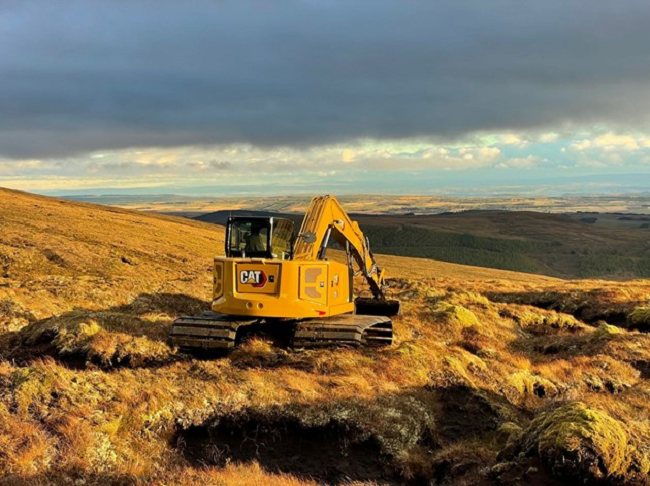Summit to sea nature restoration continues at Ben Wyvis

More than 200 hectares of peatland has now been restored on the mountainside at NatureScot’s Ben Wyvis National Nature Reserve (NNR) as part of landscape-scale habitat restoration stretching from summit to sea.
The large area of heavily eroded peat hags and gullies on the eastern slopes of the mountain, near Inverness, has been sensitively restored to re-vegetate the peat, halt erosion and allow the peatland to function properly.
The work, funded by NatureScot Peatland ACTION, has also included blocking historic man-made drains in order to re-wet the site and encourage the growth of sphagnum mosses to form new peat.
In total, 227 hectares has been restored by local contractors Albamontane at the site, which is also a Site of Special Scientific Interest (SSSI) and Special Area of Conservation (SAC).
NatureScot Nature Reserves Manager Ian Sargent said: “In Scotland’s Climate Week we want to shine a light on some of the success stories that offer real inspiration and hope in the face of the twin crises of biodiversity loss and climate change.
“Ben Wyvis NNR is one such success story, where a combination of investment and the hard work of many individuals and organisations pulling together is bringing about real and dramatic change - nature restoration on a landscape-scale that stretches from mountain summit to sea shore. It’s a great example of what can be achieved when we take positive action to protect, restore and value nature, with all the benefits that brings for people as well.”
The work will not only have wide benefits for storing carbon, but also for a variety of species that live on the slopes of Ben Wyvis, as well as wider nature restoration work along the burns and rivers that flow off the hill to the sea at Dingwall.
Peatland restoration will improve conditions for dwarf birch, a nationally scarce and important montane shrub, which is doing well and regenerating naturally on the site. Surveys will be carried out to see how dragonflies and damselflies fare in the recovering habitat.
More info here


